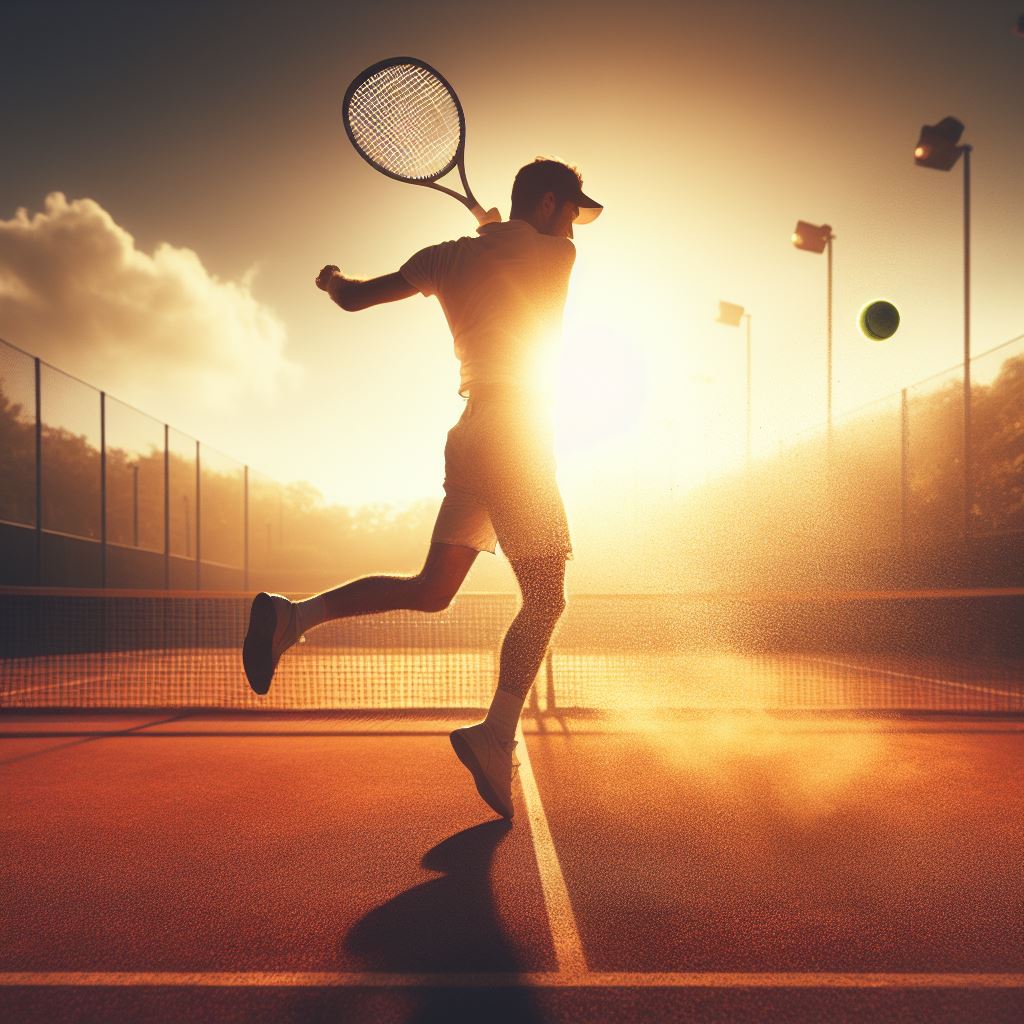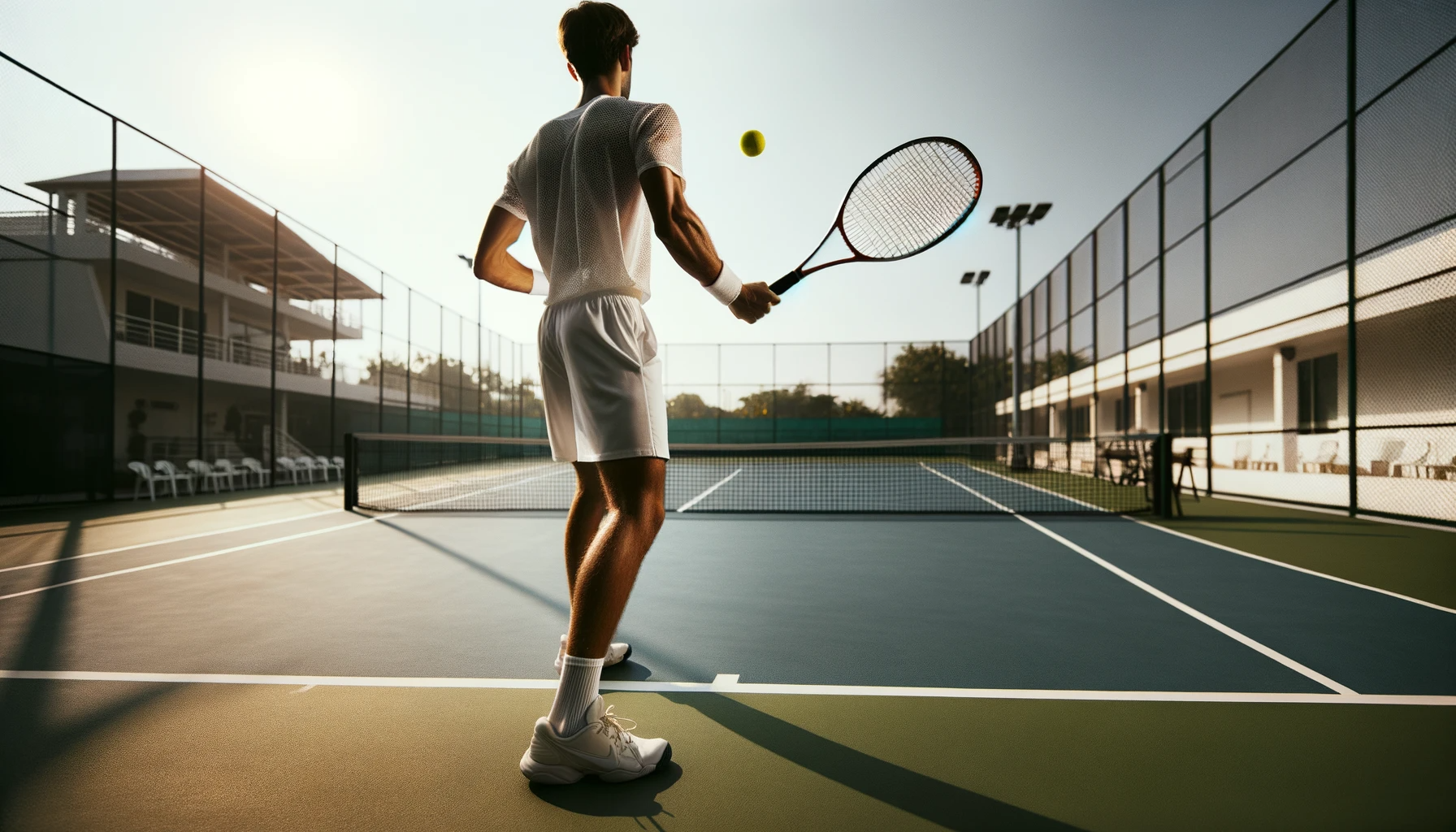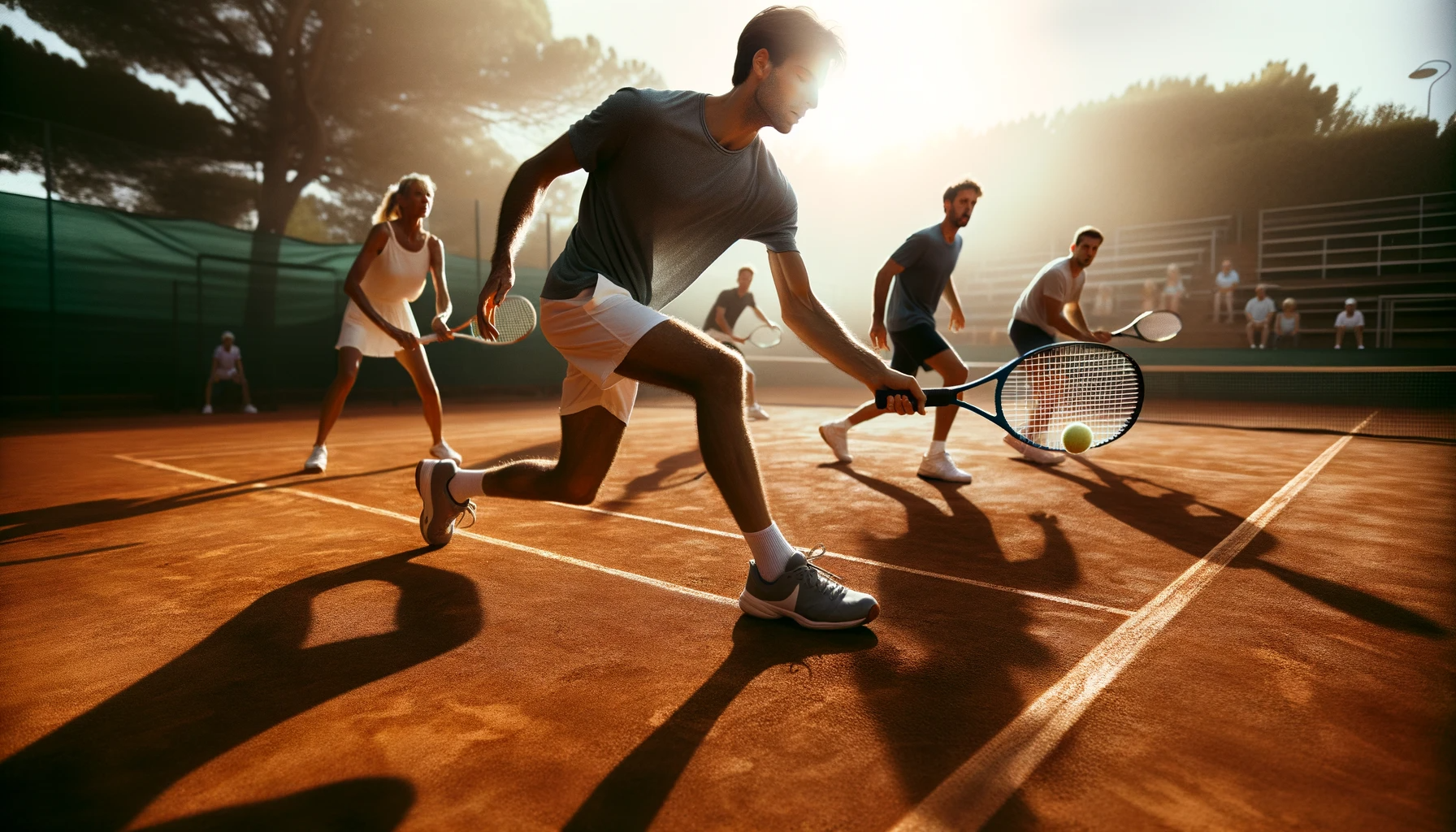While many may underestimate the importance of mastering the fundamentals, a strong foundation in tennis is crucial to achieving success on the court.
In this comprehensive guide, we will reveal the ultimate tennis basics that every aspiring player needs to know.
From proper grip and stance to honing forehand and backhand techniques, we will delve into the intricacies of the sport.
Additionally, we will explore the secrets behind mastering the serve, perfecting footwork and movement, as well as developing winning strategies for matches.
Key Takeaways
- Different types of grips in tennis: Eastern grip, Western grip, and Continental grip
- Choosing the right grip for each shot: closed grip for forehand, open grip for backhand
- Mastering topspin and slice variations for different shot trajectories
- Importance of mental game and sports psychology for staying focused and positive
Grip and Stance
The grip and stance in tennis play a crucial role in achieving optimal technique and control over the ball. Proper racket handling is essential to ensure that the player can generate power and accuracy in their shots. The grip refers to how the player holds the racket, and it can vary depending on the shot being played.
There are different types of grips in tennis, such as the Eastern grip, the Western grip, and the Continental grip. The Eastern grip is commonly used for forehand shots, as it allows for good control and spin. The Western grip, on the other hand, is suitable for topspin shots and high balls. The Continental grip is often used for volleys and serves.
In addition to choosing the right grip, players also need to adjust their grip for different shots. For example, when hitting a forehand shot, the player should have a slightly closed grip, with the knuckles pointing towards the net. On the other hand, for a backhand shot, the grip should be more open, with the knuckles pointing towards the side fence.
Forehand and Backhand Techniques
Effective execution of forehand and backhand techniques is vital for mastering the art of tennis. These two fundamental strokes form the backbone of a player’s arsenal and can greatly impact the outcome of a match.
To help you improve your game, here are three key aspects to focus on when it comes to forehand and backhand techniques:
- Mastering Topspin and Slice Variations: Developing a solid understanding and ability to execute topspin and slice variations is crucial. Topspin shots create a high-bouncing trajectory, allowing you to apply pressure and control the point. On the other hand, slice shots produce a low, skidding bounce, making it difficult for your opponent to return the ball effectively.
- Improving Shot Accuracy and Consistency: Consistency is key in tennis, and this applies to both forehand and backhand shots. Practicing proper footwork, balance, and racquet control will help you achieve greater shot accuracy. Focus on hitting the ball at the center of the racquet strings and maintaining a smooth swing motion to enhance consistency.
- Utilizing Proper Body Mechanics: To maximize the power and control of your forehand and backhand strokes, it’s essential to employ correct body mechanics. This includes using your legs to generate power, rotating your hips and shoulders for added torque, and maintaining a relaxed grip to facilitate fluid racquet acceleration.
By honing your topspin and slice variations, improving shot accuracy and consistency, and utilizing proper body mechanics, you can elevate your forehand and backhand techniques to new heights.
These skills will serve as a solid foundation as we transition into the next section on mastering the serve.
Mastering the Serve
To excel in tennis, mastering the serve is essential for players to gain a competitive edge and control the flow of the game. The serve is the starting point of every point in tennis, and it can greatly influence the outcome of a match.
When it comes to serving, two key factors to focus on are serve accuracy and serve power.
Serve accuracy refers to the ability to place the ball precisely where the player intends it to go. This requires proper technique and body positioning. Players should aim for specific areas of the court, such as the corners or the body of their opponent, to make it difficult for them to return the serve effectively. Developing good accuracy can help players win more points and put pressure on their opponents.
Serve power is another crucial aspect of mastering the serve. A powerful serve can be intimidating and challenging for opponents to return. To generate power, players must focus on their technique, such as using their legs and core muscles to generate force. It is also important to have a fluid and coordinated motion, allowing for maximum power transfer to the ball.
Essential Footwork and Movement
Footwork and movement are fundamental skills that every tennis player must master to achieve success on the court. Without proper footwork, players may struggle to reach the ball in time and execute their shots effectively. To improve footwork, players can focus on the following:
- Sidestep and shuffle: Sidestepping and shuffling are essential movements in tennis. Sidestepping involves taking small lateral steps to quickly change direction, while shuffling involves sliding the feet to maintain balance and agility. Mastering these movements allows players to cover the court efficiently and get into position for the next shot.
- Agility and quickness training: Agility and quickness are crucial for on-court performance. Training exercises such as ladder drills, cone drills, and agility ladder workouts can help improve a player’s speed, reaction time, and coordination. These exercises enhance a player’s ability to quickly respond to different shots, move laterally, and reach the ball effectively.
- Proper weight transfer: Proper weight transfer is crucial for efficient movement. Players should learn to transfer their weight from one foot to the other smoothly and quickly, allowing them to move swiftly and maintain balance during rallies. This skill helps players generate power and stability in their shots.
Strategies for Winning Matches
A strategic approach is essential for achieving victory in tennis matches. In addition to having strong technical skills and physical fitness, players must also develop a sound game plan to outsmart their opponents. One important aspect of tennis strategy is the mental game and sports psychology. Players need to stay focused, remain calm under pressure, and maintain a positive attitude throughout the match. This can be achieved through techniques such as visualization, positive self-talk, and deep breathing exercises.
Another key strategy is analyzing the opponent’s weaknesses and strengths. By studying their playing style, shot selection, and patterns of play, players can identify areas where they can exploit their opponent’s weaknesses. For example, if the opponent has a weak backhand, a player can target that side with powerful shots or well-placed drop shots. On the other hand, if the opponent has a strong serve, a player may choose to stand further back to give themselves more time to react.
Frequently Asked Questions
How Can I Improve My Timing and Coordination in My Forehand and Backhand Techniques?
Improving shot accuracy and developing muscle memory in forehand and backhand techniques can be achieved by focusing on timing and coordination. Consistent practice, drills, and repetition are key to refining these skills and achieving desired results.
What Are Some Common Mistakes to Avoid When Mastering the Serve in Tennis?
When aiming to master the tennis serve effectively, it is crucial to be aware of the common mistakes to avoid. By understanding and rectifying these errors, players can enhance their serving technique and overall game performance.
Are There Any Specific Drills or Exercises That Can Help Improve Footwork and Movement on the Tennis Court?
Drills for agility and exercises for lateral movement are crucial for improving footwork and movement on the tennis court. These specific training techniques can enhance players’ ability to react quickly and efficiently to different shots, ultimately improving their overall performance on the court.
What Are Some Effective Strategies for Winning Matches Against More Experienced Players?
When facing more experienced players, it is crucial to develop strong mental game strategies to overcome the intimidation factor. Additionally, effective tactics involve identifying and capitalizing on the weaknesses of your opponents, ultimately leading to a successful match outcome.
Can You Provide Any Tips for Maintaining a Consistent Grip and Stance Throughout a Tennis Match?
Maintaining a consistent grip and stance in tennis is crucial for optimal performance. To achieve this, focus on proper hand placement and grip tension, while also prioritizing footwork and movement on the court.
Conclusion
In conclusion, mastering the fundamentals of tennis is crucial for success on the court.
By understanding the proper grip and stance, as well as honing forehand and backhand techniques, players can significantly improve their game.
Additionally, mastering the serve and having essential footwork and movement skills are essential for winning matches.
With these strategies and techniques in place, players can enhance their overall performance and dominate their opponents with ease.
The ultimate tennis basics guide is a game-changer for any aspiring tennis player.








No Comment! Be the first one.